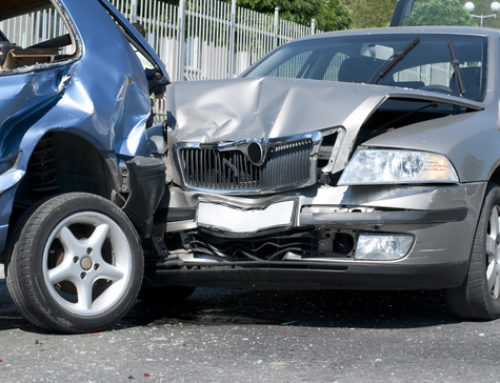The National Safety Council published results of a study that showed that traffic fatalities are up 14 percent nationally in the first half of 2015 compared to the first half of last year. Injuries are also up by a third.
More than 18,600 people have lost their lives in fatal car accidents this year while the amount of money car crashes are costing is up as well. This year, the National Safety Council estimates people spent over $152 billion on everything from property damage, wage and productivity losses, administrative expenses, employer costs, medical expenses and medical bills following automobile accidents. That’s up 24 percent from the same period in 2014, putting 2015 on pace to be the deadliest for drivers since 2007.
Since gas prices began falling and the economy has added more jobs, more people are driving which attributes to the rise in crashes due to drivers distracted by their cell phones or other devices.
With an improved economy and lower than average gas prices, Marylanders have been putting a record number of miles on the road, but it’s not the entire reason why there is an increase in injuries and deaths nationwide. On average, gas prices are down huge amounts from 2014 levels and with steadily added jobs all throughout 2015, there are more commuters on the roads.
Nearly 19,000 people across the country lost their lives in traffic accidents through the first half of 2015 but the National Safety Council report does not include July and August, the historically highest months for automobile and traffic related deaths. With gas prices at the lowest point in years, it’s likely that the dangerous winter months have contributed as well.
For the last 15 consecutive months through May, the nation’s driving has steadily increased. In 2015, Americans drove 1.26 trillion miles in just the first five months of the year, surpassing the previous record of 1.23 trillion set in May of 2007 for a cumulative increase of 3.4 percent, far less than the 14 percent increase in deaths. The estimated annual mileage death rate so far this year is 1.3 deaths per 100 million vehicle miles traveled, up from the 2014 preliminary rate of 1.2 deaths.
Besides safer vehicles, there are other trends at play as well. Over the recent decades, deaths due to accidents involving drunken driving have dropped from about half of fatalities to only about 30 percent. Teen driving deaths are also on the decline while seatbelt use is up. Newer cars have become exceedingly safe, beeping when lane integrity is breached, if a drowsy driver shifts lanes or if the driver is about to back into something. Multiple airbags, systems which detect imminent crashes, pre-tensioning the seatbelts and charging brakes are factors that make the difference between dying in a car accident and surviving one. Sadly however, drivers sometimes don’t know how to use the safety technology in their vehicles or don’t bother to use it at all.
At odds with the safety improvements to vehicles, a growing number of states are raising speed limits. 10 states recently began working on higher speed limits. While some states like Hawaii have maximum posted speed limits of 60, Nevada as well as Arizona have 75 mile per hour speed limits, Utah has recently raised the maximum speed limit to 80 miles an hour on rural roads while Texas has raised the speed limit on some of its roads to 85 miles per hour. As most of us know from our experience driving on freeways, the speed we drive is usually 10 miles per hour more. Most drivers don’t fully grasp that with increased speed comes increase risk for accidents as well as decreasing the fuel economy of their vehicle.
Along with faster speeds, drivers are being distracted by cellphone calls and text messages. The National Safety Council reported in spring that a quarter of all car accidents involve cellphone use. Besides fatal crashes, that includes property damage-only and injury-only accidents as well. The only reason that we do not see a spike in fatal crash numbers due to distraction by cell phones is because it is complicated to find out the exact cause of the accident or clearly identify the factors involved directly before the crash.
According to Maryland state law, it is illegal to talk or text on a handheld cell phone or similar device while driving. The Department of Transportation notes that not only is cell phone use banned while driving in Maryland, it also means that a driver is four times more likely to crash when driving and using a mobile device simultaneously. Driving while texting or talking can delay reaction time as much as driving legally drunk, even when by Bluetooth or any other hands-free method. Another sobering statistic is that at any given moment, over 800,000 vehicles in the United States are being driven by someone using a cell phone or hand-held device. Using a cellphone while driving reduces the amount of driving-related brain activity by 37 percent and delays a driver’s reaction time as much as a blood alcohol concentration of .08 percent.
While the economy continues to grow in strength and unemployment begins to dip to pre-Great Recession levels, combining low gas prices with those trends means that more people will be out on the roadways and sadly, with more people on the road travelling, there are sadly more fatal traffic accidents.
To make sure you are safe on the roadways, take steps to eliminate distracted driving dangers such as being well rested and alert before driving. If you’re tired, you’re less mentally alert and less able to avoid collisions. Manage your time wisely so that you are not forced to multi-task while on the road. Know the route you are driving so that you aren’t forced to make sudden stops which endanger yourself, your vehicle and the drivers around you. Take time to make sure that your vehicle is in proper operating condition and that you are familiar with all of the features on your vehicle from the presets on your radio, MP3 devices to the climate controls. Make sure that objects are secured properly, including your phone, placed somewhere that you aren’t tempted to reach for it and become distracted.
Try your best to eliminate all the distractions you can while driving. Put your passenger in charge of the radio and other distracting functions to ensure the safety of everyone in the vehicle.
If your phone has a feature to send automatic messages to respond to calls or texts you receive while on the road, use it. It could save your life and the lives of fellow drivers on the road.
Finally, of course, if you have been injured by a distracted driver, be sure to call Ingerman & Horwitz for a free consultation on your legal rights.












